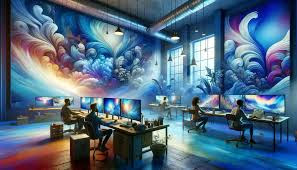Non Fungible Tokens Insights: Guide to NFTs in Game.
The rise of NFTs has been a significant trend in cryptocurrency and blockchain technology. The term “NFT” is now more popularly searched than the term “crypto” itself, according to Coin Telegraph. In a previous blog post, we discussed how NFTs are currently trending. However, an upgraded version of NFTs, NFT 2.0, has now emerged and is expected to revolutionize the current standard.
What is NFT2?
NFT 2.0 is an evolved version of NFT 1.0 that can do much more than sit on a blockchain and be owned. These upgraded NFTs can be extended as well as upgraded, which means they have the potential to be connected with other NFTs or projects in a meaningful and helpful manner.
Usages of NFT 2.0
In terms of upgrading, NFT 2.0 can be upgraded as much as the imagination allows. These upgrades include artwork, metadata, adding new resources, etc. For instance, if you buy a dragon egg as an NFT, you can own everything that hatches out of it. As you nurture and care for your dragon, it can grow into a beast as big as Drogon. The possibilities are endless!
Regarding extension, NFT 2.0 can connect with other NFTs or other projects meaningfully and usefully. Suppose you have a gun bought in a sniper shooter game as an NFT and want to upgrade it. In that case, you can buy NFTs such as a scope, a customized stock, a silencer, or skin and then link them all up and convert them into an entirely usable and sellable NFT. Imagine owning a car in a racing game and then customizing it to your desires. You could treat the whole upgraded thing as a single NFT. There would be no limits to the layers of ownership as there can be as many “child NFTs” as the owner wishes.
These features enable NFT 2.0 to do more than exist. They allow the user to equip other NFTs, issue commands, change looks, and more. This is the beginning of a universe full of possibilities, or the Metaverse.
Few NFT 2.0 Works Worth Mentioning
Several names are currently working on NFT 2.0s and are worth mentioning. RMRK (pronounced as “remark”) is a standard that can be used for customizing NFTs. It is a set of Legos that exist as standalone but allows their owners to build something as they wish. The RMRK-based NFT 2.0s can be nested, have different resources to switch between, change visuals/data based on specific criteria (day/night), and be shared into a Decentralized Autonomous Organization (DAO). Imagine owning land in the Metaverse shared by multiple owners or changing the look and feel of an NFT based on the time of day. How about owning a Rare Monster that breeds rare babies that the original owner automatically owns? The options are limitless! For more details, we recommend looking at their project called Kanaria.
LTO Network, a Dutch blockchain network, revealed a roadmap in December 2021 for their main net upgrade known as Titanium. They released a white paper focusing on solving the “NFT Centralization.” They champion coining the term “Ownables” and how they will function. Like other NFTs, Ownables can be media files, images, songs, and 3D models of which the owner has full possession. They also
NFTs, or non-fungible tokens, have become a hot topic in recent years, but the concept of digital ownership and scarcity goes back decades.
In the early days of the internet, digital art was often shared and distributed for free. As the internet grew and digital art became more popular, the need for digital artists to monetize their work became apparent. This led to the creation of digital art marketplaces where artists could sell their work, but the issue of digital ownership and scarcity was still challenging.
In 2012, a group of developers created Colored Coins, which aimed to create digital assets on top of the Bitcoin blockchain. This project allowed users to create and trade digital assets, but it was limited in its functionality and needed to be more widely adopted.
The first actual NFT project was CryptoPunks, created by Larva Labs in 2017. CryptoPunks were 10,000 unique 8-bit characters, each with its distinct attributes, and were one of the first digital assets to use the Ethereum blockchain to verify ownership and scarcity. The project gained a cult following and sparked interest in NFTs.
In 2019, CryptoKitties, another NFT project, was launched on the Ethereum blockchain. CryptoKitties were unique digital cats that could be bought, sold, and bred, each with unique attributes and characteristics. The project gained widespread attention and caused a surge in Ethereum network usage, leading to slow transaction times and high fees.
In 2020, NBA Top Shot, an NFT platform for digital collectibles featuring NBA highlights, was launched by Dapper Labs. The platform quickly gained popularity, with some digital collectibles selling for hundreds of thousands of dollars.
Since then, NFTs have revealed in popularity, with artists, musicians, and celebrities creating and selling their unique digital assets. Some notable sales include Beeple’s “The First 5000 Days” NFT, which sold for $69 million, and Jack Dorsey’s first tweet, which sold for $2.9 million.
Despite the hype and controversy surrounding NFTs, they have the potential to revolt the art world and provide new opportunities for creators to monetize their work. However, there are also concerns about the environmental impact of NFTs, as the energy consumption required to power the blockchain can be significant. As with any new technology, the long-term impact and implications of NFTs are still uncertain.
For details, see this company’s blog: https://bleedingedge.studio/blog/
.png)
.jpg)

Comments
Post a Comment